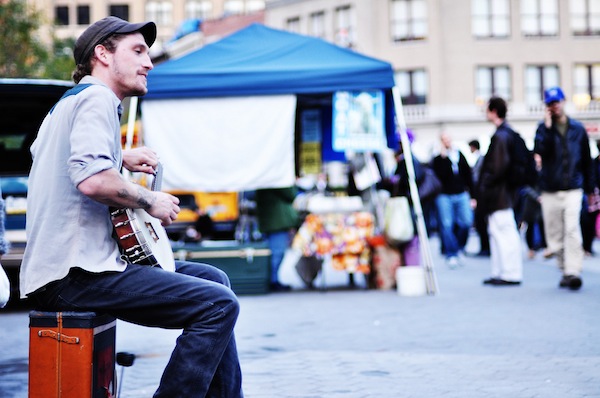PERCHED ON A BATTERED SUITCASE, his flat cap pulled rakishly over one eye, he yowls through his stubble while his fingers slide along the banjo. One foot taps a tambourine, the other stamps on a bass drum pedal that thuds against the empty case.
Between verses he closes his eyes and sighs into a harmonica.
